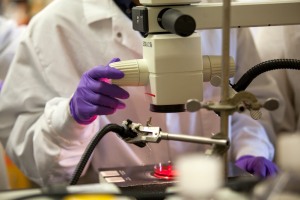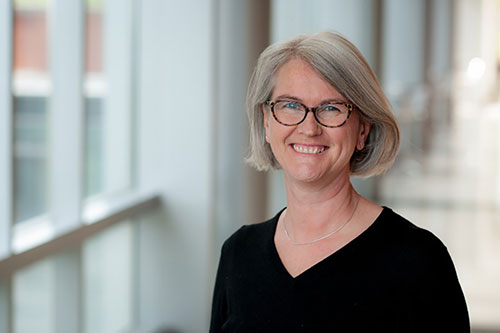
PROVIDENCE, R.I. [Brown University] — A new $100 million gift to Brown University’s brain science institute from alumnus Robert J. Carney and Nancy D. Carney will drive an ambitious agenda to quicken the pace of scientific discovery and help find cures to some of the world’s most persistent and devastating diseases, such as ALS and Alzheimer’s.
Carney graduated in Brown’s undergraduate Class of 1961, is a long-serving Brown trustee, and is founder and chairman of Vacation Publications Inc. Previously, he was a founder of Jet Capital Corp., a financial advisory firm, and Texas Air Corp., which owned Continental Airlines and several other airlines. Nancy Doerr Carney is a former television news producer.
The Carneys’ gift changes the name of the Brown Institute for Brain Science to the Robert J. and Nancy D. Carney Institute for Brain Science, and establishes the institute as one of the best-endowed university brain institutes in the country. Brown President Christina Paxson said the $100 million donation — one of the largest single gifts in Brown’s history — will help establish the University as a leader in devising treatments and technologies to address brain-related disease and injury.
“This is a signal moment when scientists around the world are poised to solve some of the most important puzzles of the human brain,” Paxson said. “This extraordinarily generous gift will give Brown the resources to be at the forefront of this drive for new knowledge and therapies. We know that discoveries in brain science in the years to come will dramatically reshape human capabilities, and Brown will be a leader in this critical endeavor.”
The gift will allow the Carney Institute to accelerate hiring of leading faculty and postdoctoral scholars in fields related to brain science, supply seed funding for high-impact new research, and also fund essential new equipment and infrastructure in technology-intensive areas of exploration.
Core areas of research at the institute include work on brain-computer interfaces to aid patients with spinal injury and paralysis; innovative advances in computational neuroscience to address behavior and mood disorders; and research into mechanisms of cell death as part of efforts to identify therapies for neurodegenerative diseases that include amyotrophic lateral sclerosis (ALS) and Alzheimer’s.
Carney said he is excited that he and his wife are making their gift at a time when brain science has emerged as one of the fastest growing programs at Brown, both in terms of research and student interest.
“Nancy and I have long been impressed by the phenomenal research and education of bright young minds that we see at Brown,” Carney said. “We are excited to see the brain institute continue to grow and serve society in ways that are vitally important.”
VIDEO: Brain Science at Brown
With up to 45 labs across campus engaged in research at any given time — and 130 affiliated professors in departments ranging from neurology and neurosurgery to engineering and computer science — Brown’s brain science institute already has built a reputation for studying the brain at all scales, said Diane Lipscombe, the director of the institute since 2016 and a professor of neuroscience. From studying genes and circuits, to healthy behavior and psychiatric disorder, the institute’s faculty contribute expertise to routinely produce insights and tools to see, map, understand and fix problems in the nervous system.
In addition, as the brain institute’s work grows in its breadth, undergraduates continue to take on key roles as researchers, reflecting a distinctive aspect of Brown’s undergraduate curriculum. About a quarter of all Brown undergraduates take Introduction to Neuroscience, demonstrating the excitement in the field.
“This is a transformative moment that is going to catapult Brown and our brain science institute,” said Lipscombe, who is president-elect of the Society for Neuroscience, the field’s international professional organization. “We will be able to crack the neural codes, push discoveries forward and address some of the largest challenges facing humanity, at the same time training the next generation of brain scientists.”
Investments like the gift from the Carneys are the “lifeblood to driving innovation and discovery,” Lipscombe said.
The Carneys’ gift is part of Brown University’s $3-billion BrownTogether comprehensive campaign, which has raised $1.7 billion to date. In total, $148 million has been raised to support research and education in brain science. The gifts support one of the core research priorities defined in Brown’s Building on Distinction strategic plan: understanding the human brain. The study of the brain and its relationship to cognition, behavior and disease is often described as the “last frontier” in biomedical science.
Leading in research
The Carney Institute had its start at Brown as the Brain Science Program in 1999, later becoming the Brown Institute for Brain Science. The scope of its work has increased dramatically in recent years, and the institute now has affiliated faculty spanning 19 academic departments, including clinical departments in the Warren Alpert Medical School.
Since 2011, core faculty members have led projects with more than $116 million in grant funding from federal and other sources. Many of the institute’s researchers have been recognized as pioneering leaders, winning top national awards in recent years. This includes faculty such as Eric Morrow, associate professor of biology and psychiatry, a 2017 winner of a Presidential Early Career Award for Scientists and Engineers.
The funding from the Carneys’ gift will help support what has become a signature program of Brown’s brain institute over the past decade: cutting-edge efforts to help those who have lost the ability to move and communicate through paralysis to regain those abilities. Research into brain-computer interfaces, part of the BrainGate project, uses tiny micro-electrode arrays implanted into the brain.
“This is the area of research that said to us, ‘Look what can be done if you pull groups together from a wide range of academic disciplines within and beyond the life sciences to take an integrative approach to big, challenging questions,’” Lipscombe said. “The breakthroughs we have seen in confronting paralysis could not have happened without the integrative approach that is distinctive to the way Brown approaches brain science.”
The study of neurodegenerative diseases and the growing research field of computational neuroscience are among the other areas in the institute that are poised for further expansion.
“The general challenge is that, despite 20 or 30 years of focused effort by pharmaceutical companies and labs, we still don’t know why neurons die in neurodegenerative disorders,” Lipscombe said. “ALS is part of a group of disorders that takes people’s lives way too early. We need more research into the basic mechanisms that lead to cell death.”
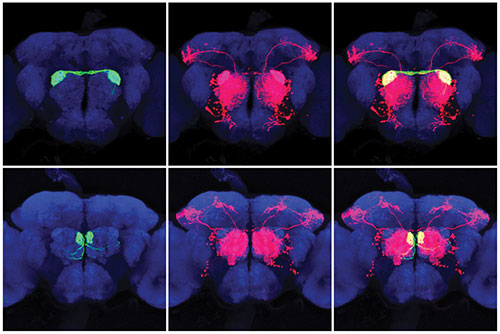
Computational neuroscience is an increasingly influential field that employs mathematical models to understand the brain and develops quantitative approaches to diagnosing and treating complex brain disorders.
Scientists working in computational psychiatry at Brown are thinking about how they can use their work modeling the brain to address psychiatric disease, such as depression.
“And when you are catalyzing innovative research in areas such as this by bringing together great faculty from different disciplines, having a pool of seed funding is critical to move from exciting ideas to research and discovery,” Lipscombe said. “From there, federal funding follows. Now we can say we have the people, resources and the new research space to support big ideas to address key problems in brain science.”
The Carney Institute will move into expanded new quarters at 164 Angell Street early next year, after extensive renovation of the building that formerly housed Brown administrative offices. The building will give the institute state-of-the-art shared lab spaces that will further promote collaboration among teams from cognitive neuroscience, computational neuroscience and neuroengineering. These scientists are working on processes such as decoding neural signals, developing new ways to use neural signals in assistive technology, and mining neural data for more accurate predictors of psychiatric illnesses.
The new location will be in the same building as Brown’s Data Science Initiative and directly across the street from the new home of Brown’s Jonathan M. Nelson Center for Entrepreneurship, stimulating opportunities for collective work that will support discoveries and their impact on society.
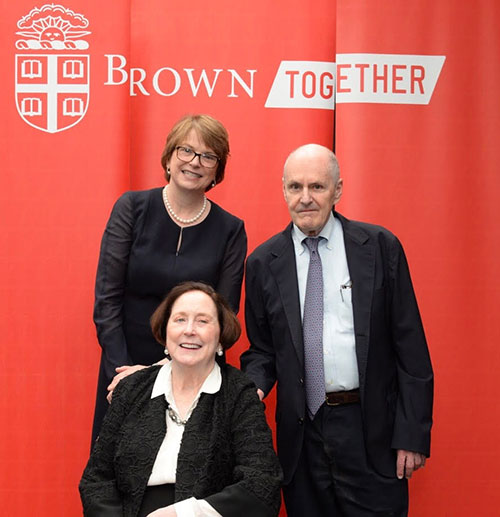
Inspired giving
The gift from the Carneys is one of three single gifts of $100 million to Brown in its 254-year history. Brown announced in 2004 that New York businessman Sidney E. Frank, a member of the Brown Class of 1942, had pledged $100 million for undergraduate financial aid. A $100 million gift from the Warren Alpert Foundation announced by Brown in 2007 funded research, faculty recruitment, a new building and named Brown’s Warren Alpert Medical School.
“This wonderful gift from the Carneys is one of the most significant in the long, distinguished history of Brown University,” Brown Chancellor Samuel M. Mencoff said. “The gift represents a substantial long-term investment in what Brown does exceptionally well — bringing together the people and expertise to solve problems and benefit society.”
The Carneys said they were inspired to make their gift by many previous positive experiences with Brown, as well as the opportunities they saw for the University in brain science.
“Brown has meant so much to Nancy and me,” Carney said. “We feel extremely fortunate to be able to help expand Brown’s brain institute and carry forward such a significant priority for the University.”
The Carneys, of Houston, are long-time supporters of Brown, including as the donors of two endowed professorships — the Robert J. and Nancy D. Carney University Professor of Economics and the Robert J. and Nancy D. Carney Assistant Professor of Neuroscience. This spring, Carney will finish his third term as a trustee on the Corporation of Brown University. His volunteerism includes having served as the co-chair of the 50th reunion gift committee for the Class of 1961.
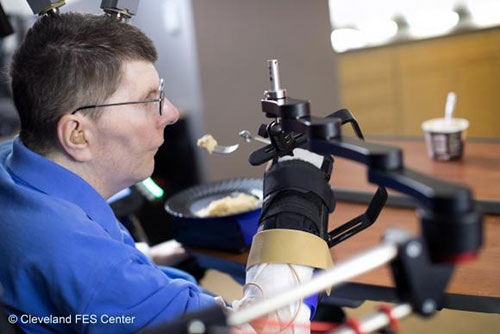
Former Brown Chancellor Thomas J. Tisch, currently a member of the Corporation’s Board of Fellows, said about the Carneys, “They have always done things worth doing, quietly and with modesty and deep intelligence. Bob and Nancy have a great combined sense of caring and commitment to things important.”
As part of a celebration in Houston coinciding with the announcement of the Carneys’ gift to the brain science institute, Paxson on behalf of the University conferred honorary Doctor of Humane Letters degrees on both of the Carneys.
The citation read, in part: “Through your steadfast support of Brown’s ambitions to expand its reach through excellence in teaching and research in particular, you have played a major role in bolstering its reputation as a world-class learning institution.”
